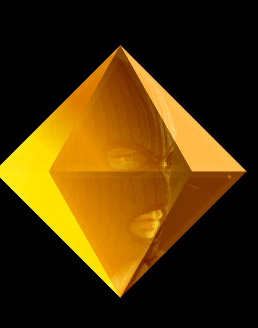Is Play-to-Earn the Future of Esports?
Play-to-Earn (P2E) games increased in popularity in recent years.
This innovative model integrates blockchain technology into gaming, allowing players to earn real-world value through their in-game activities and cash them out through crypto wallets like the Ka.app website.
In 2022, P2E non-fungible token (NFT) games were worth around USD 3,292.73 million globally. Experts project that the web3 gaming sector would have a yearly growth rate of about 17.93%, and it may achieve USD 8,856.95 million by 2028.
In case you’re wondering if P2E can be the future of esports, we’ll delve into this question by examining the potential impacts and challenges of this burgeoning trend.
What Are P2E Games?
P2E games allow you to earn digital assets like cryptocurrencies and NFTs that can be traded, sold, or used within the game environment. These assets are not just in-game currencies without real-world value; they carry economic weight, potentially convertible into real money.
This model not only enhances the gaming experience by adding a layer of financial incentive but also democratizes the revenue generation process by distributing profits directly to the players rather than solely to game developers and publishers.
The Good Things About P2E
Esports traditionally revolve around competitive gaming at professional levels, including tournaments and leagues where players compete in popular games like "League of Legends," "Dota 2," and "Fortnite." These platforms have primarily generated revenue through advertising, sponsorships, and broadcast rights, not directly through the players’ in-game activities. Here’s where P2E models could integrate with traditional esports ecosystem:
· Economic Incentives
P2E games offer new economic incentives for both casual and professional players. For professional esports athletes, integrating P2E elements could mean a new revenue stream. As these players excel in games, the digital assets they accumulate could increase in value, adding a layer of financial gains to their achievements beyond traditional prize money and sponsorships.
· Broadening Participation
The P2E model could significantly lower the entry barriers to the esports world. Traditional esports success requires high skill levels and often significant financial investment in high-quality gaming equipment and training. In contrast, P2E games reward players simply for participation and progress, allowing more individuals to earn from gaming, regardless of their professional skill levels. This could democratize access to esports earnings, potentially expanding the industry’s audience.
· Fan Engagement
Integrating P2E mechanics into esports could also transform fan engagement. Fans might earn tokens by watching games, participating in events, or trading player-related NFTs, which could increase viewer engagement and loyalty. This active participation could deepen the community’s connection to the games and create a more vibrant fan base.
Potential Challenges with P2E
Despite the promising synergies, several challenges may hinder or slow down the integration of P2E into mainstream esports:
· Regulatory Hurdles
The incorporation of real-world financial value into gaming may raise significant regulatory questions concerning securities, taxation, and money laundering. For instance, with the game "Axie Infinity" in various countries, regulatory compliance could pose substantial hurdles for widespread adoption of P2E models in esports.
· Game Design and Balance
Balancing a game’s competitive integrity with the P2E elements is critical. There is a risk that P2E could prioritize profit over skill, undermining the competitive nature of esports. Developers must carefully design games where financial incentives do not overpower skill and strategy as the primary determinants of success.
· Market Volatility
The value of digital assets in P2E games is subject to crypto market fluctuations. This volatility could impact players’ earnings unpredictably, potentially making the P2E model less appealing for some professional gamers who seek stable incomes.
So, Is P2E the Future?
While it’s clear that P2E introduces exciting opportunities for the esports industry, whether it is the future depends on how well the above challenges can also be addressed. The successful integration of P2E into esports requires a balanced approach that respects the competitive spirit of gaming, ensures regulatory compliance, and provides stable economic benefits to players.
Final Thoughts
P2E could very well be a significant part of the future of esports, especially as technologies and regulations mature. It presents an opportunity to make esports more inclusive and financially rewarding for a broader audience. However, for P2E to sustainably integrate into the esports ecosystem, it must evolve in a way that enhances, rather than undermines, the competitive, skill-based nature of esports. The journey of P2E in esports is just beginning, and its trajectory will be one to watch in the coming years.













